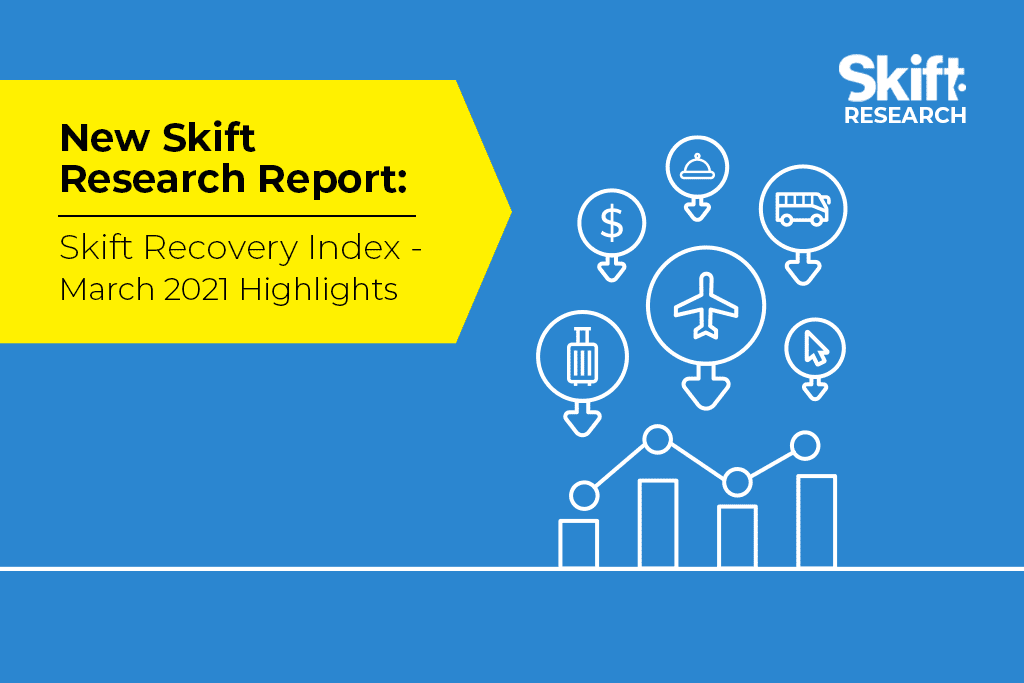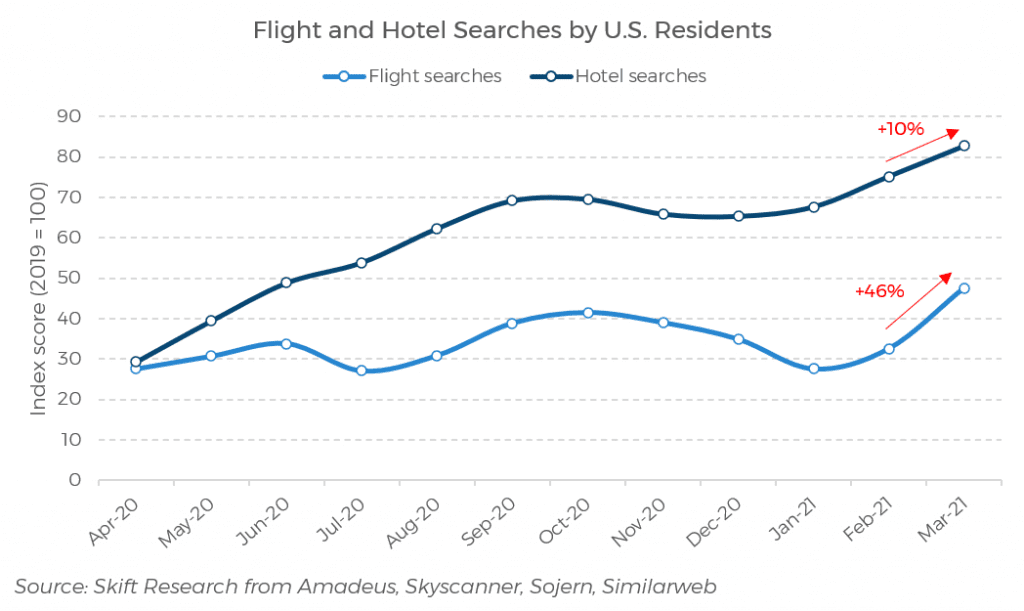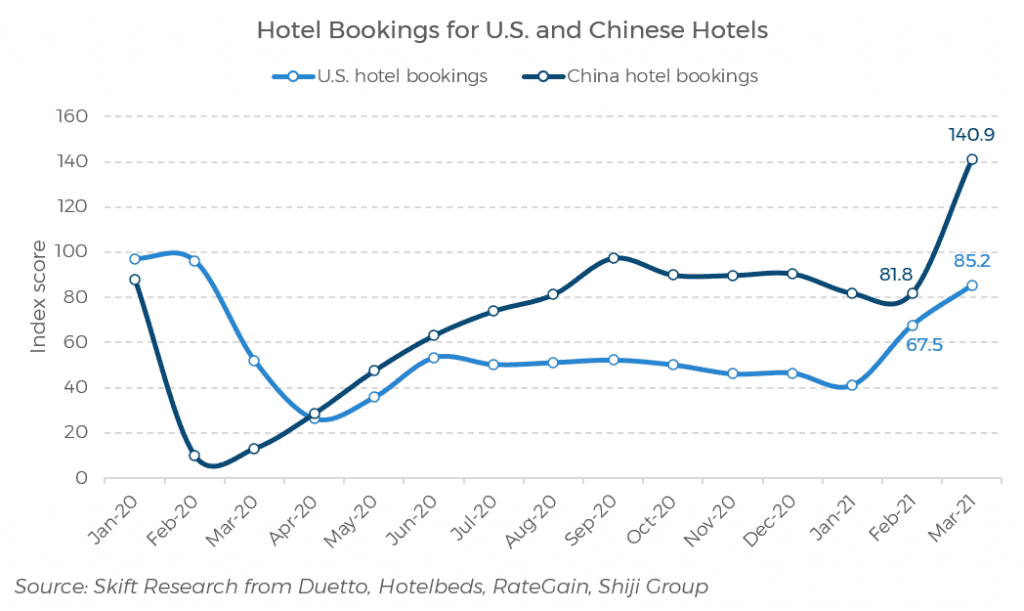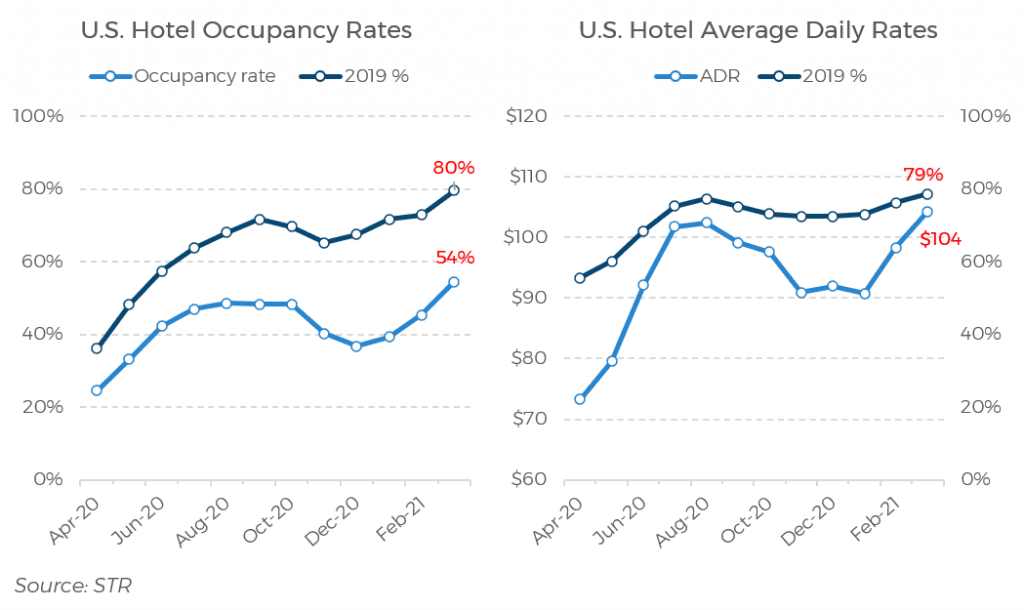U.S. Travel Rebound Getting Stronger: New Skift Recovery Index

Skift Take
Last month might go down as a true turning point for the travel industry. The Skift Recovery Index tracks how recovery is taking shape, with the global performance breaking through the 50 percent barrier for the first time since March 2020. That means that overall, the travel industry is performing at half of pre-pandemic levels.
This might sound like a long way of returning to normalcy, but the recovery is far from equal across the globe and folded within this average are some strong recovery stories. Mexico, the top performer in March, is tracking at 81 percent, and the U.S. moved up 10 percentage points to perform at 73 percent of pre-pandemic levels.
Intrinsically interlinked, the fact that the U.S. is performing well is benefiting both the U.S. itself, with domestic travel levels up considerably, and Mexico. According to OAG, there are over 50,000 seats scheduled from Houston to Mexico City in April, and 44,000 between Dallas and Cancun.
The U.S. travel sector has laid off a large workforce in response to the sharp demand decline. Now it’s facing the opposite challenge: labor shortage. Delta has already had to cancel flights due to pilot shortages, Uber is seeing demand returning quicker than drivers, and hotels are predicting staff shortages as the summer is expected to see bumper crowds of American domestic travelers.
Whichever graphic we show, the upward trend for the U.S. in our Recovery Index that started in February continued in March, and in many cases actually accelerated.
Search levels for flights and hotels were up. Hotel searches have been high for a while, but especially flight searches soared in March, up 46 percent from February.
The number of passengers going through U.S. ports increased from 24 million in February to 38 million in March according to TSA numbers. Scheduled seat capacity for domestic flights increased by 35 percent between February and March, while international flight capacity remained understandably flat.
U.S. hoteliers had looked enviously at China, as domestic travelers propped up booking levels and occupancy rates to help the country’s hotel industry reach close to pre-pandemic performance levels for more than six months now.
But finally, U.S. hoteliers are seeing the same happening to them as well. In March, U.S. hotel bookings jumped up to 85 percent of 2019 levels, higher than what China achieved only a month earlier. Chinese hoteliers, however, also benefited from the ending of local lockdowns in their country and saw bookings increase to almost 1.5x of 2019 levels.
It nevertheless shows how the U.S. accommodation sector is nearing a complete return to pre-pandemic levels for some indicators. Also in terms of actual occupancies achieved, the U.S. achieved an estimated 54 percent occupancy rate, which is only 14 percentage points lower than in March 2019. Average daily rates have also shot up, now only 21 percentage points below March 2019 levels.
There is still a long way to go, and to climb the final 20 percent to pre-pandemic levels we might be talking in years rather than months. For airlines similarly, Skift Research does not expect international seat capacity and prices to return to pre-pandemic levels in 2021. On balance, however, March had a lot of positive vibes.
Skift Research's latest report, discussing the March 2021 Highlights from the Skift Recovery Index is now available to our subscribers.
The Skift Recovery Index is a real-time measure of where the travel industry at large — and the core verticals within it — stands in recovering from the Covid-19 pandemic. We work with 17 data partners to track how different sectors and countries are recovering from the current pandemic.
The index provides the travel industry with a powerful tool for strategic planning, of utmost importance in this uncertain business climate. Skift Research members have access to all data and reports.








